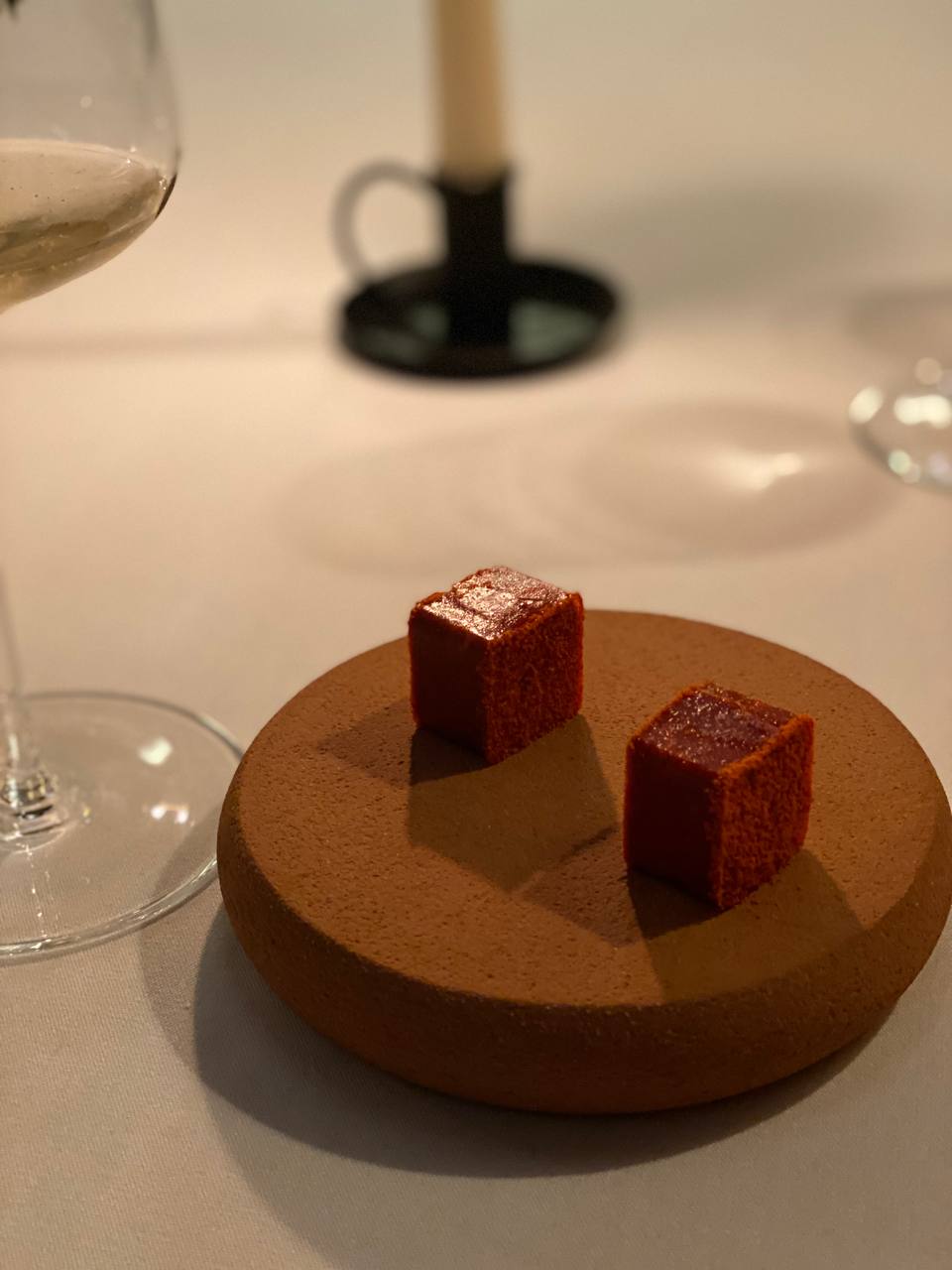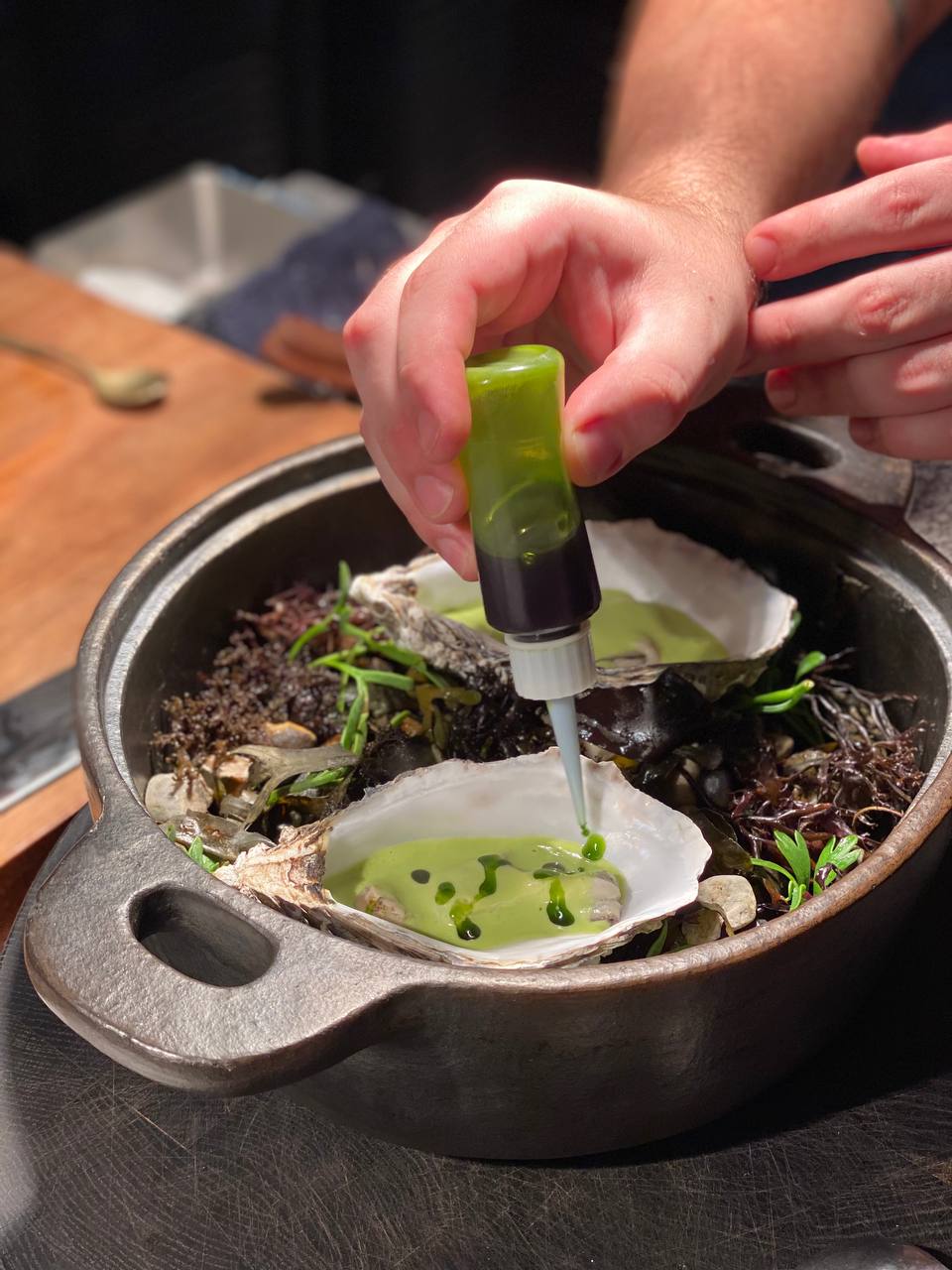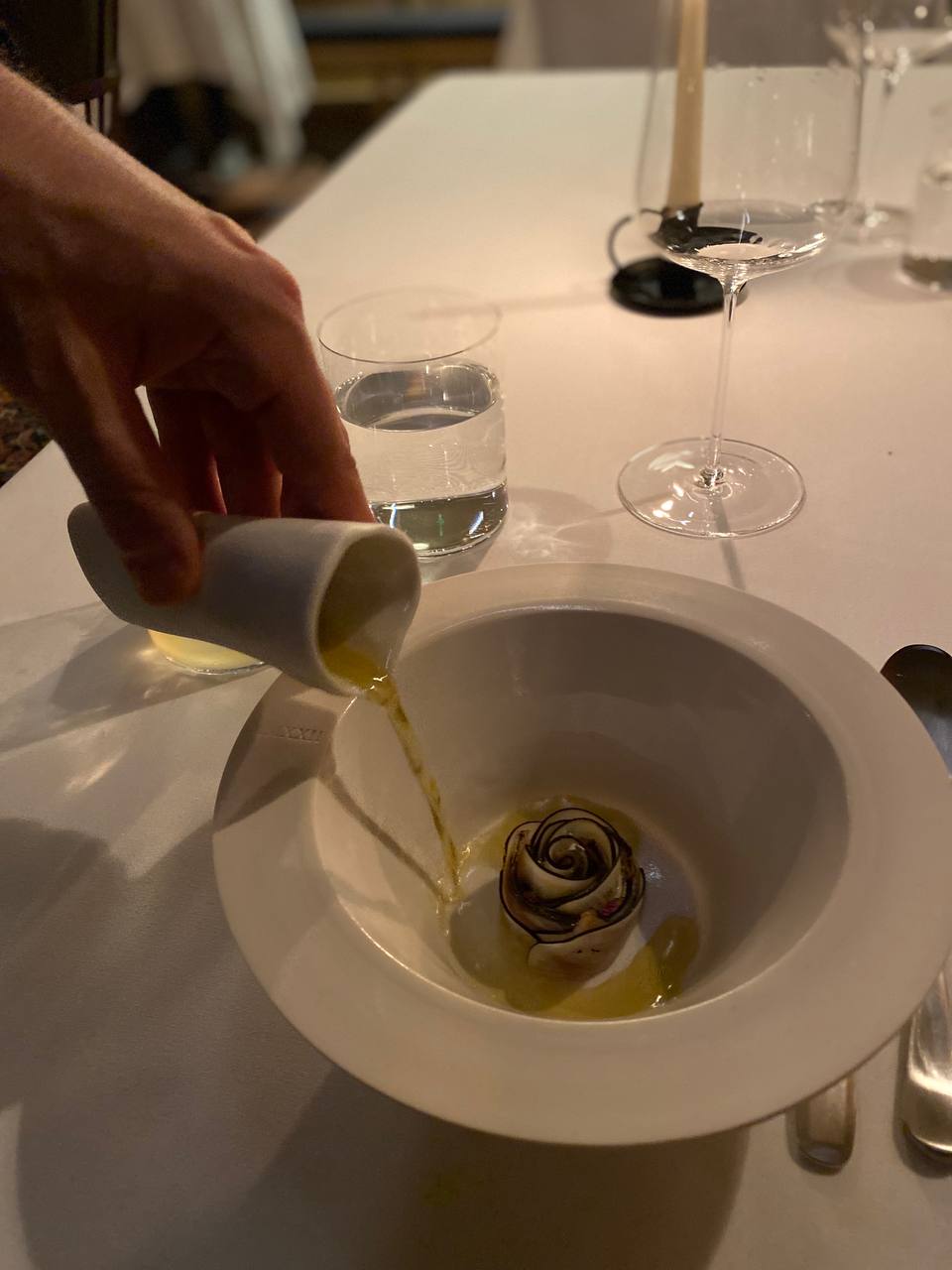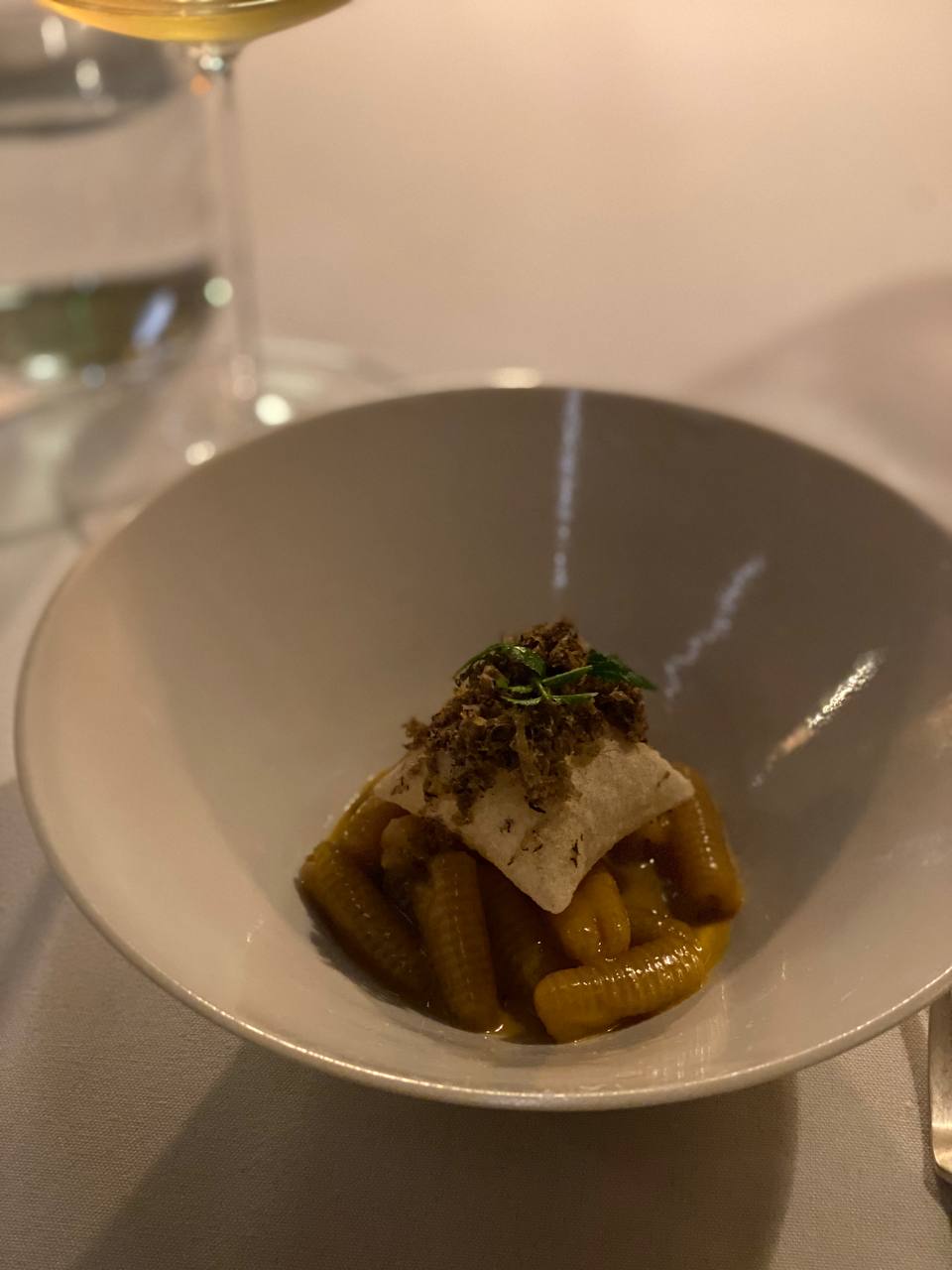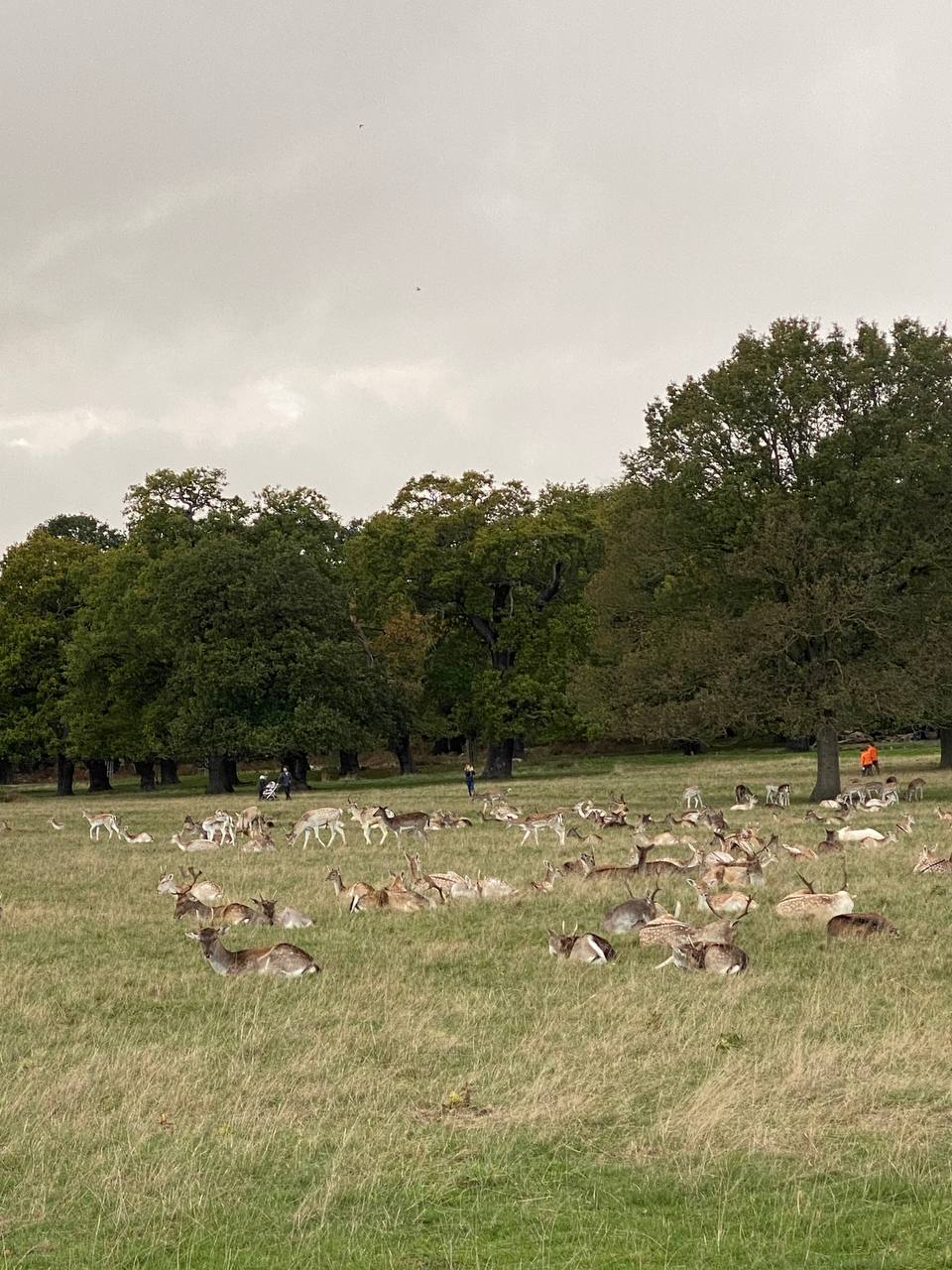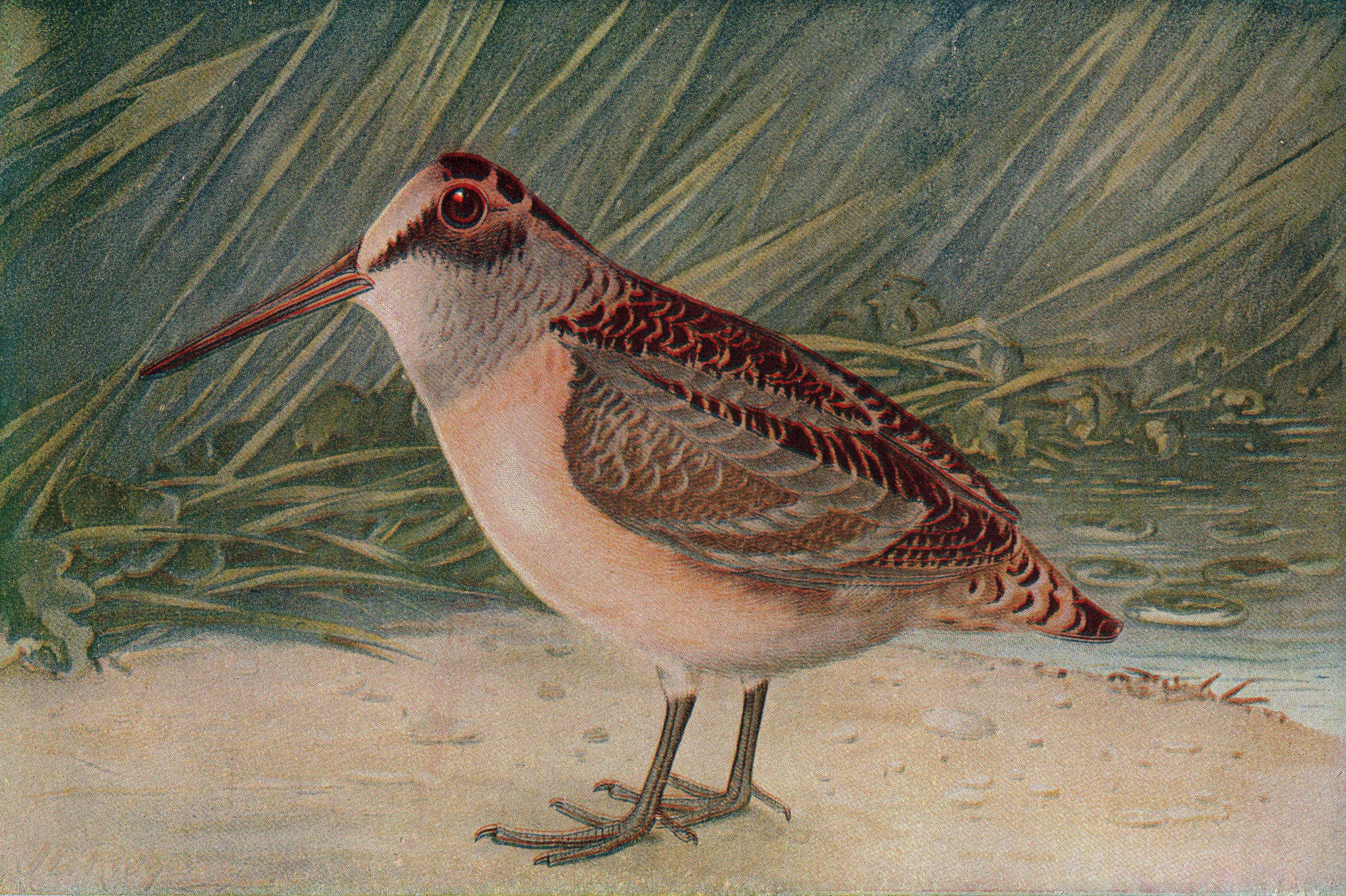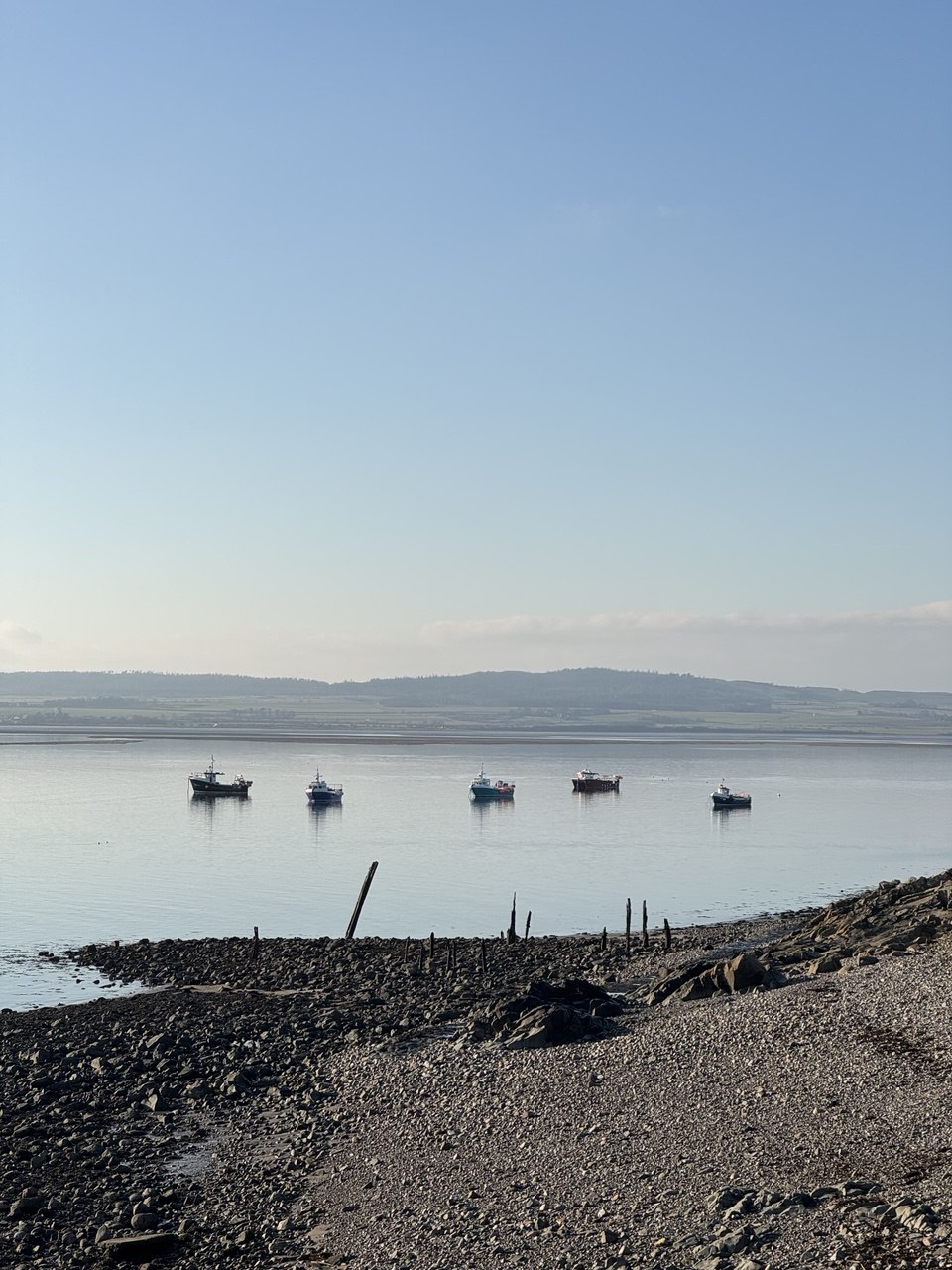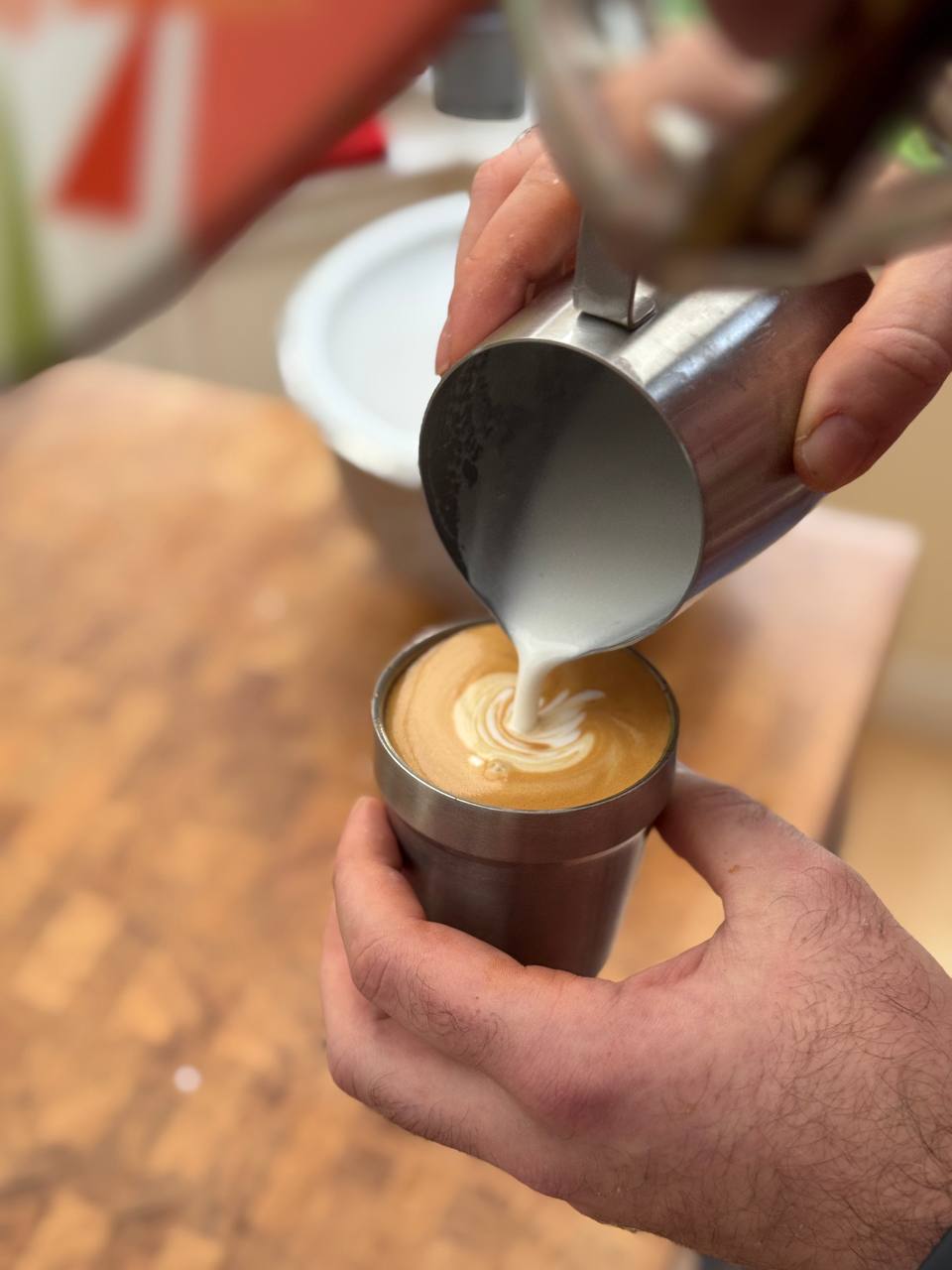|
Your weekly crème de la crème of the Internet is here!
01.11.2022 (read in browser)
Intro
Whatever is on my mind this week. Things I enjoyed reading
Ten-ish articles I found worth reading. Things I didn't know last Tuesday
Ten-ish facts I didn't know when I wrote the previous edition. Book of the week
Some thoughts on the latest book I've read.
This is the 120th edition of the newsletter, and as I mentioned recently while most of emails now require a paid subscription, once a month I will be sending out a free edition – this is it.
If you'd like to receive this newsletter every week, as well as get access to an archive of all previous free and paid editions, you can do it here.
Since the previous email you've missed three newsletters:
#117 on charcuterie, where I make vegan charcuterie using koji, understand peculiarities of the Jewish Calendar, and learn about the shortest street name in the city. #118 on cultural references, where I in a few hours I learn more about English culture than in five years before, explore options of health monitoring, and find out how nuclear reactors really work. #119 on guilty pleasures, where I cook chebureki for the first time in years, miss lunches with wine, and learn how to use an ordinary watch as a compass.
On being in the kitchen
One of this week's highlights for me was a long awaited visit to a just opened restaurant Cycene – meaning kitchen in Old English – that was opened by a chef who's creations we got to eat at a West African restaurant Akoko half a year ago.
There were more than ten dishes, although some were more like snacks, and yet even snacks got to surprise, like this piece of chicken liver that was incredibly lightweight and disappeared on my tongue leaving a thick and rounded aftertaste.
|
|
|
At some points we were invited into the kitchen to have a mid-shift snack with the chefs who kindly answered our questions and showed around. Pictured is an Isle of Skye oyster, probably the biggest I've ever seen, which they steam for an hour and then rid of a muscle and serve with some caviar, blackcurrant wood oil, cucumber beurre blanc and a fermented cucumber drink.
|
|
|
Next followed raw Scottish Mackerel with ponzu, black radish, shiso oil, and dash broth.
|
|
|
But my favourite dish was this miso and goat cheese cavatelli with sea urchin butter, black truffle, kinome and something with cassava, probably a deep-fried souffle.
|
|
|
And the last main was some delicious venison served with plums and celeriac, but as we went to the Richmond's Park over the weekend here is a way better picture of deer not made into a steak yet.
|
|
|
(now is the season, just saying)
Things I enjoyed reading
Last week I supported some author's concerns about good old lunches turning into dull snacks without wine and cocktails. This week it's time to complain about dinners happening too early, which makes them less fun and ends the evening faster:
What keeps me awake in the early hours is the fear that the restaurant world I love is changing because younger diners have such a different attitude towards drinking. I’m sure there are people who can have a couple of kombuchas, a low-alcohol craft beer or two and a home-fermented shrub to round things off before heading home for an early night, but I need to start at three seconds past six with a cleansing martini and I really can’t get through sufficient wines and after-dinner drinks to make it worth going out unless we can continue past midnight. Getting swept out at closing time used to be what defined a grown-up. Now, apparently, it’s your ticket to rehab.
While there are obviously reasons for such a change, I can't really deny the main point: the amount of effort it takes to go out mid week just doesn't justify a few quick plates and an optional drink, if that will take less time than the total commute.
I rarely use my desk for its purpose, unless I attend a meeting, but attending meetings is not the reason I have a standing desk with a monitor, split keyboard, and carefully aligned Rubik's Cubes, so this article piqued my interest purely for research reasons.
While I appreciate the effort put into the presentation of the photographs, I can’t help feeling like something is missing. I don’t just want to know a list of the exact products used. What are the principles underlying the choices? What’s the story behind that particular desk? How about that color scheme?
We have the opportunity not just to create something worthy of sharing on social media. Why not do more? The ideal desk setup has the potential to immediately transport us to a frame of mind that leads to the best work. It’s just like how being dressed to the nines can give us a jolt of confidence when meeting strangers.
And yet I wish more companies would be covering "home office" setups, not limited to a working machine – there is way more to working from home, whether it's the Internet, desks, chairs (bloody expensive I must say), and then a bunch of often overlooked accessories.
It's probably a rather straightforward thought, but I never considered ID'ing antennas on surrounding buildings, partly because there is not much value in it (I am not a huge radio fan), and parly because I just didn't think that it could be so straightforward.
Knowing the wavelength of a particular frequency immediately gives us a handle on the size of antenna required to use it, but it’s not quite as simple as a 3 metre antenna being designed for 100 MHz. Instead the archetypal antenna uses a fraction of the wavelength, usually a half or a quarter, so immediately an element of identifying the type of antenna comes into play.
And by "straightforward" I probably meant "requires years of practice".
A very touching story; one that makes you ask more questions than it answers, and then leaves a bitter-sweet aftertaste akin to a well-made Negroni.
She was diagnosed with leukemia when Lily was six months old. Diana had wanted to check herself out of that hospital and drive herself and the baby straight to a Buddhist monastery. Lily was with us in the hospital room at the time, playing with a plastic glove that had been blown up into a five-fingered balloon. Diana and I had looked at each other, no clue, nowhere to begin, certainly no answers, other than the largest answer, that is, the answer that emerged in how, despite or maybe in lieu of the terror of the situation, our bodies had involuntarily gravitated toward each other, how our petty grudges and growing disagreements—all the fissures and loggerheads that had been emerging in our marriage—had given way.
I must say though, driving to a Buddhist monastery is definitely an option in pretty much any scenario.
It's the quarter results week again, and Meta is not doing great but the author argues that this is not the first time and things will eventually change.
The obvious retort is that sure, users may occasionally open Meta’s apps when they are bored, but they are spending most of their time in other apps like TikTok, and that that time is coming at the expense of Meta’s apps, particularly Instagram.
There is, to be clear, good reason to think that TikTok is having a big impact on Instagram specifically and Facebook broadly, but that impact, to the extent it is being felt, is in depressing growth, not in reversing it.
As someone who uses Instagram infinitely more often than TikTok I can definitely relate.
This is definitely not the first time I write about Caravaggio, but despite being rather far from the world of arts, I do adore his style and find his story rather fascinating (the Michelangelo's less so):
When Michelangelo sculpted the god of wine, he conjured up a lithe and well-proportioned youth, like many others by his hand, idyllic. But his Bacchus remains unknowable. Caravaggio’s is flawed, undoubtedly, but he is real. We can reach out and touch him. We can smell the wine on his breath.
A fun fact: there is a restaurant here in London, created in homage to his work, but the reviews are rather mixed. I also don't really think that the name is the most appealing given Caravaggio's paintings, but maybe that's the subtle message to the visitors.
A beautifully designed example of some misconceptions people might have about geography.
Two thirds of the continent lie north of the equator, a fact that comes as a surprise to many.
Africa and South America could easily be assumed to lie parallel to each other in the minds of many.
I'd suggest checking the original article for the interactive piece of work.
My first conscious encounter with Alan Watts was when my ex-boss explained his pseudonym in a social network, describing Watts as one of the most inspiring philosophers of the generation. I've read some if his works since then, and while the "lazy" approach definitely sounds great, I can't really abstain from the way it transformed Alan's life:
He failed as a husband, marrying three times, and driving his third wife to the bottle with his philandering – he would pick up a different college girl after most talks (‘I don’t like to sleep alone’). He failed as a father to his seven children: ‘By all the standards of this society I have been a terrible father’, although some of his children still remember him fondly as a kind man, a weaver of magic, who initiated each of his children into LSD on their 18th birthday. He was vain and boastful, ‘immoderately infatuated with the sound of my own voice’ – although, like Ram Dass, he wasn’t a hypocrite, and did try to constantly warn his young audience he wasn’t a saint - not that they listened.
Maybe that's the point though: if everyone is already a part of the Brahman, then why bother?
I've been to Chinatown in Manchester a few times – completely by accident – and both times it struck me by its emptiness. This piece sheds some light onto the reasons behind its possible decline:
There’s also a convenience store and a café, serving milk tea in branded cups and soft serve ice cream in fish shaped cones called taiyaki. It’s thought of everything; it has everything. It’s basically the Gen-Z Chinatown, but the question is: can the original keep up?
The London's Chinatown, on the contrary, looks like a destination to be: surrounded by Soho bars and agitated buffets, there is an entertainment for everyone.
I wonder what's the first thing that comes to your mind upon reading the title.
For me that's probably asking for our choice of drinks minutes after bringing the menu. It might be just me, but I pick the food first, and then finalize my drink choices afterwards, based on the order and type of meals. I also tend to stop by for an aperitif beforehand, so maybe that makes me a tough guest.
The post is not about waiters though, it's about digital menus – and I do agree, albeit it seems like less of a problem than it was a year ago.
QR-code menus are not really an advance. Even when everything goes just right––when everyone’s phone battery is charged, when the Wi-Fi is strong enough to connect, when the link works––they force a distraction that lingers through dessert and digestifs. “You may just be checking to see what you want your next drink to be,” Jaya Saxena observed in Eater late last year, “but from there it’s easy to start checking texts and emails.” And wasn’t it already too easy?
My most traumatic experience was brought by an underground bar in Edinburgh: it's wifi was incredibly slow, and the menu huge and picturesque, and QR codes were barely visible under dimmed lights and candles.
At least the drinks were great.
Things I didn't know last Tuesday
A nice solution to a problem, and a yet another occupation that won't make any sense nowadays:
There was a time when cities still slept. In premodern London, despite patchy schemes here and there for street lighting, once darkness set in, it was a challenge to make one’s way through the slumbering streets. There was a solution, however: much the way we hail cabs, a medieval Londoner could hail a torch-bearer to light their way home from a night on the town.
Judging by the source it didn't help much during the fog, so there was also that problem.
|
|
|
By laws cab drivers couldn't leave cab stands when the cars were parked there, so struggled to get food and drinks during the shift, so a so-called Cabmen's Shelted Fund fixed the problem:
Most were staffed by an attendant who sold food and (non-alcoholic) drink to the cabbies and were provided with a kitchen in which the attendant could cook this food and also food provided by the cabbies themselves. The attendant was not generally paid, but was expected to make an income from these sales. The shelters were also provided with seats and tables and books and newspapers, most of them donated by the publishers or other benefactors. Most could accommodate ten to thirteen men. Gambling, drinking and swearing were strictly forbidden.
There are still just above a dozen of those Shelters left in London, and some of them even let us mere mortals in on Open House days.
|
|
|
I've tried this seaweed over the weekend and was fascinated by its similarity to a black truffle in taste and colour:
Pepper Dulse (Osmundea Pinnatifida) tastes like no other seaweed, it is nicknamed “the truffle of the Sea” and with good reason; it has an intense truffle/mushroom flavour that simply does not belong in a 2cm long frond of seaweed.
|
|
|
I didn't source this variety yet, but actually do have some Dulse at home, also dubbed as "the bacon of the Sea".
Can't blame those Irish foragers for these names.
Most people (myself included) tend to believe that drinking only tea or coffee could lead to dehydration, but seems like it is widely based on some debunked study from 1928, partly because it was believed that caffeine might work as a diuretic. This is not true at all:
These findings indicate that a moderate caffeine dose, equivalent to approximately 5 espresso cups of coffee or 7 servings of tea, does not alter TBW and fluid distribution in healthy men, regardless of body composition, PA, or daily water ingestion.
There is more research going on, but overall caffeine-based drinks do count towards overall daily water intake.
Most birds are cooked and served without guts, but woodcock is an exception: supposedly because it empties its stomach before every flight.
It's prepared by roasting it intact, head, innards and all, on top of a piece of toast. It's then eviscerated, the guts or 'trail' enriched with glace and smeared on the toast. The bird is disjointed, piled on top of the toast and topped with the skull, split vertically in half along the length of the beak. You are supposed to pick it up like a teaspoon and suck out the brains.
Such a shame the only restaurant I know of that serves them whole is on the other side of the city.
|
|
|
Resistant starch is a starch that resists digestion by the body, is a type of fiber and has lots of health benefits, but is not so common in food... unless you cool it and reheat again.
One study compared freshly cooked white rice to white rice that was cooked, refrigerated for 24 hours and then reheated. The rice that was cooked then cooled had 2.5 times as much resistant starch as the freshly cooked rice.
It works pretty much with everything though, from potatoes to pasta, but I guess at that point everyone needs to decide where reheating won't ruin the dish.
Personally I would go for the freshly cooked pasta, but reheated rice probably tastes even better to me as it is more fluffy.
It might be oddly local, but I really like both the meaning and its etymology:
“Onion snow” is a term particular to the state of Pennsylvania originated by the Pennsylvania Dutch culture and language, and refers to a snowfall that occurs after the spring onions have been planted, and comes right as they are sprouting. Others say that this late spring snow is an indicator for when it’s a good time to start planting onions. Either way, the snowfall is defined as light and melts quickly, and is usually the final snowfall before the end of the spring season.
I also couldn't come up with a more British alternative: rhubarb would make some sense but it seems to be off time-wise.
I used to read Jules Verne a lot in my childhood, but given that this particular story is about traveling in an underwater ship always thought that the title refers to the depth, while in fact it's not.
The title refers to the distance traveled under the various seas: 20,000 metric leagues (80,000 km, over 40,000 nautical miles), nearly twice the circumference of the Earth.
There are a few things that I learnt in retrospective: 20K leagues is nearly ten times more than the diametre of the Earth, and while leagues are used to measure the distance, the depth is measured in fathoms.
God bless meters.
A really cool (albeit a tad dangerous) molecular cuisine technique:
Specifically, it is a mixture of four salts: sodium chloride (common salt), sodium acetate (known as vinegar salt, which arises when the pH of vinegar is neutral), potassium chloride (sodium-free salt, very suitable for hypertensive) and calcium salt (a tiny amount). This mixture allows the cook to significantly increase the amount of salt dissolved in the water.
How does it work? The water absorbs way-way-way more salt than usually, and then gets poured onto a raw ingredient right in front of a customer. The salt molecules reactivate and quickly crystalize, which produces lots of heat (70-80ºC if the liquid was cold, and 130-136ºC if it was hot).
So think scallops cooked nearly instantly, or a nice way to finish a steak with both salt and heat.
I didn't know that the New Asgard scenes from a Marvel movie were filmed next to Edinburgh in a small village:
Doubling as the site of New Asgard – the adopted home of Thor and his people – is the tiny fishing village of St Abbs on the south east coast of Scotland. Just an hour’s drive from Scotland’s capital city, today St Abbs is a hotspot for scuba divers, with those brave enough to face the cold North Sea treated to some astonishingly clear waters.
I also totally missed that the movie features both Irn Bru and Innis & Gunn beer (which is actually quite good).
Book of the week
I am often quite sceptical when it comes to books on food that we find in charity shops, mostly because I rarely have any prior reference points or reviews in front of me, but Valentina Harris' Fiori di Zucca is a pleasant surprise:
Attempts at her much-loved soufflés were rather less successful in the kitchen’s somewhat rudimentary wood-fired oven, especially as Maria would never heed my Nonna’s warning: “Don’t open the oven door yet, or it will collapse!” However, her Cherry Clafoutis (see page 89) always turned out beautifully and my mother told me that she would look forward to the fruity pudding, made with the cherries from the tree growing in the garden. It was the children’s favourite teatime treat.
The author splits the book into numerous chapters telling the story of her parents, grandparents, and their grand-parents.
There are some recipes, usually somehow related to stories she tells, but I wouldn't really call it a cook book, probably because the aformentioned clafoutis recipe differes from the one I make a lot.
However it's a great example of how our lives shape the food we eat, cook, and enjoy, and the food generations to come will discuss and remember.
Thank you and see you in a week
(or in a month)!
If you'd like to support the newsletter, please subscribe to the weekly plan. Otherwise you will keep receiving the letters on a monthly cadence – no need to do anything to opt-in.
If you have any questions, or want to suggest a link for the next newsletter, please drop me a message on Twitter or reply to this email.
Cheers! 🍸
|
|
|
